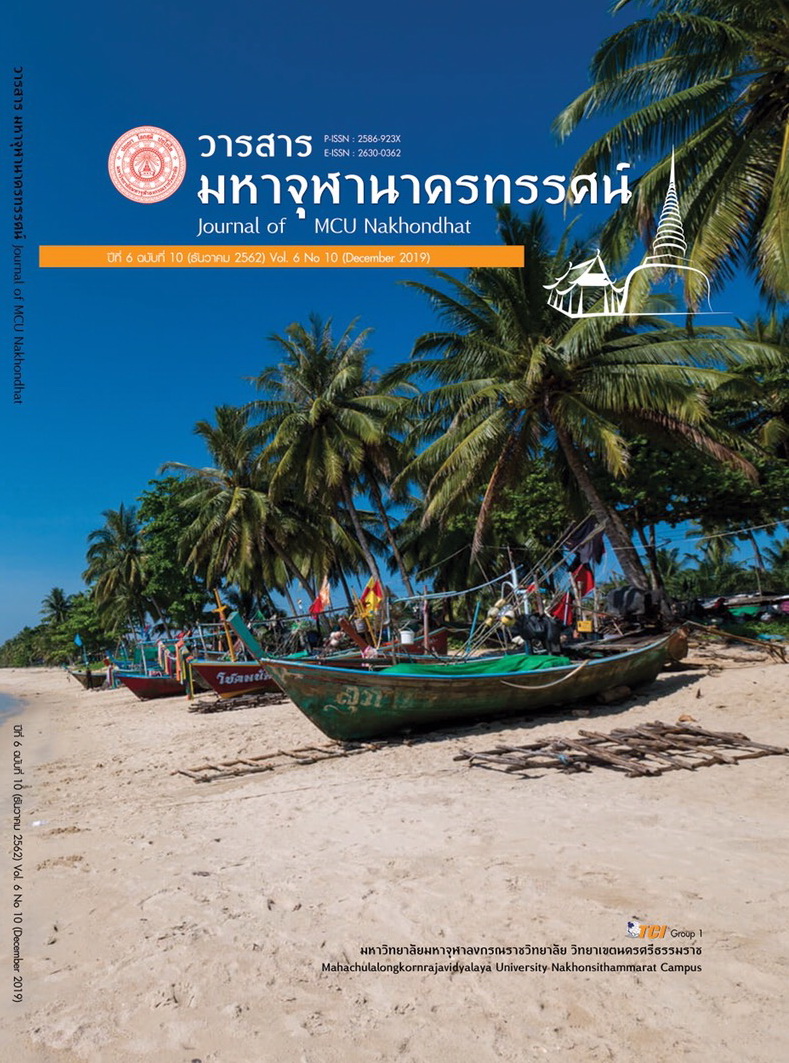THE IMPACT OF INTERVIEW CONTENTS AND STYLES OF GENERAL PRAYUTH CHAN-OCHA ON THE PERSONAL BRAND IMAGE OF THE PRIME MINISTER OF THAILAND
Main Article Content
Abstract
This research is a survey research to find out how the communication style of General Prayuth Chan-ocha, the Prime Minister of Thailand affected his personal brand image Survey research. A structured questionnaire was distributed among 400 people who participated in the rally protesting the corrupt ex-government. The findings revealed that the respondents had low need for communication; they did not pay much attention to his interviews with the press. They perceived his communication style to be aggressive, ill-tempered, and insensitive to the press and the audiences. Nonetheless, they did not mind his communication style, and perceived it to be the manifestation of his sincerity and truthfulness. Moreover, they thought that the press in Thailand who often asked aggressive political questions deserved this particular style. Only few of the respondents would like him to change his communication style to be more polite and less aggressive. However, it was obvious that no matter how the respondents perceived the Prime Minister’s communication style, they were confident in his premiership of Thailand’s junta administration, and wanted him to be the Prime Minister of Thailand after a general democratic election planned to be held in May 2019.
Article Details
References
เอกจิต สว่างอารมณ์ และอัศวิน เนตรโพธิ์แก้ว. (2560). การศึกษาวาทกรรม ประชามติ”ของพลเอกประยุทธ์ จันทร์โอชา นายกรัฐมนตรีผ่านรายการคืนความสุขให้คนในชาติ. วารสารการสื่อสารมวลชน คณะการสื่อสารมวลชน มหาวิทยาลัยเชียงใหม่, 5(2), 71-96.
ilaw. (2562). “ประชามติไทยสไตล์: โหวตเยส รัฐประหาร ร่างรัฐธรรมนูญ”. เรียกใช้เมื่อ 1 สิงหาคม 2562 จาก https://ilaw.or.th/node/4170
Benita Zulch. (2014). Leadership Communication in Project Management. Procedia-Social and Behavioral Sciences, 119(1), 172-181.
Boulding Kenneth E. (1956). The Image : Knowledge in Life and Society. Michigan: The University of Michigan.
Budiman. (1975). Newton Claire. “The Five Communication Styles”. Retrieved July 15, 2015, from www.clairnewton.co.za
Finn Seth. (1997). Origins of media exposure: Linking personality traits to TV radio print and film use. Communication Research, 24(5), 507-529.
Kheder M. (2014). Personal branding phenomenon. International Journal of Information Business and Management, 6(2), 29–40.
Mohammed Renier Steyn. (2016). Persinal branding: A systematic review of the research and design strategies used reported in Jourmal articlesrelating to criticao elements of personal branding. Retrieved July 15, 2019, from https://pdfs.semanticscholar.org/ade5/c6a103f88fca5d33dcf315d1a2f62336c709.pdf
Notatantonio and Cohen. (1990). The Effects of Open and Dominant Communication Styles on Perceptions of the Sales Interaction. International Journal of Business Communication, 27(2), 171-184.
Ruggiero Thomas E. (2009). Uses and Gratifications Theory in the 21st Century. Journal of Mass Communication and Society, 3(1) 3-37.
Russell R. (2001). The role of values in servant leadership. Leadership & Organization Development Journal, 22(2), 76-84.
Towler Annette J. (2003). Effects of charismatic influence training on attitudes, behavior, and performance. Personnel Psychology, 56(2), 363–381.


